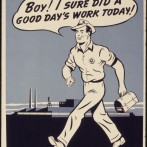Expanding vs. Contracting
Over the years, business has been fervently looking for ways to control and reduce costs. There’s BPR, JIT, TQM, BPM, BPMN, BMM and more. All essentially systems designed to monitor, maintain, or reduce costs. Here’s what I find fascinating: amidst all of this focus on reduction there is little focus placed on amplifying and expanding the value of the company’s number one asset—the people that work there. The paradigm of ‘cost containment and reduction’ largely captures most of the attention. Here’s the thing, the number one asset of most organizations—the people—lies largely untapped. There’s that asset, showing up everyday, running at levels oftentimes well below potential. If a piece of equipment demonstrated similar efficiencies, the mechanics would be swarming. Yet, with people, it seems leadership is confounded as to how to enhance this vital asset. Simply stumped. In many ways, it’s not surprising. When it comes to working with people, the modus operandi has largely been ‘management’ oriented. A process which is in need of a significant refresh and quite possibly, a total replacement. It is simply an outdated tool. When you review what has occurred in the process improvement realm over the years, it’s replete with new ideas and innovation. When you review what has occurred in the people improvement realm…mostly different versions and varieties of ho-hum management. Let’s face it, many business leaders are unsure of how to legitimately increase the commitment, engagement, performance and productivity of the people in their company. The legacy of command/control and carrot/stick management practices, even in their more palatable forms, continue to be instituted. As such, they will continue to maintain what they have always maintained—most people doing just enough to not get fired. That is a waste of a remarkable resource. Without question, it makes sense to manage costs and reduce them where appropriate. But, it makes equal or more sense to expand upon the value of an asset that’s in place and showing up everyday. Getting out of the ‘reduction’ mindset with regard to people is essential. The name of the game on the people front is personal/professional expansion. Not from the old paradigm of “get more out of them,” but rather by increasing their connection, allegiance and willingness to do the job well. That’s the 180—people performing not because they are afraid of the repercussions if they don’t, but rather because it matters to them that they do. Is your company or management in need of a 180? How about your people? Give us 30 minutes. We’ll get you moving in the right direction. Schedule a Needs Discovery...
Read More





